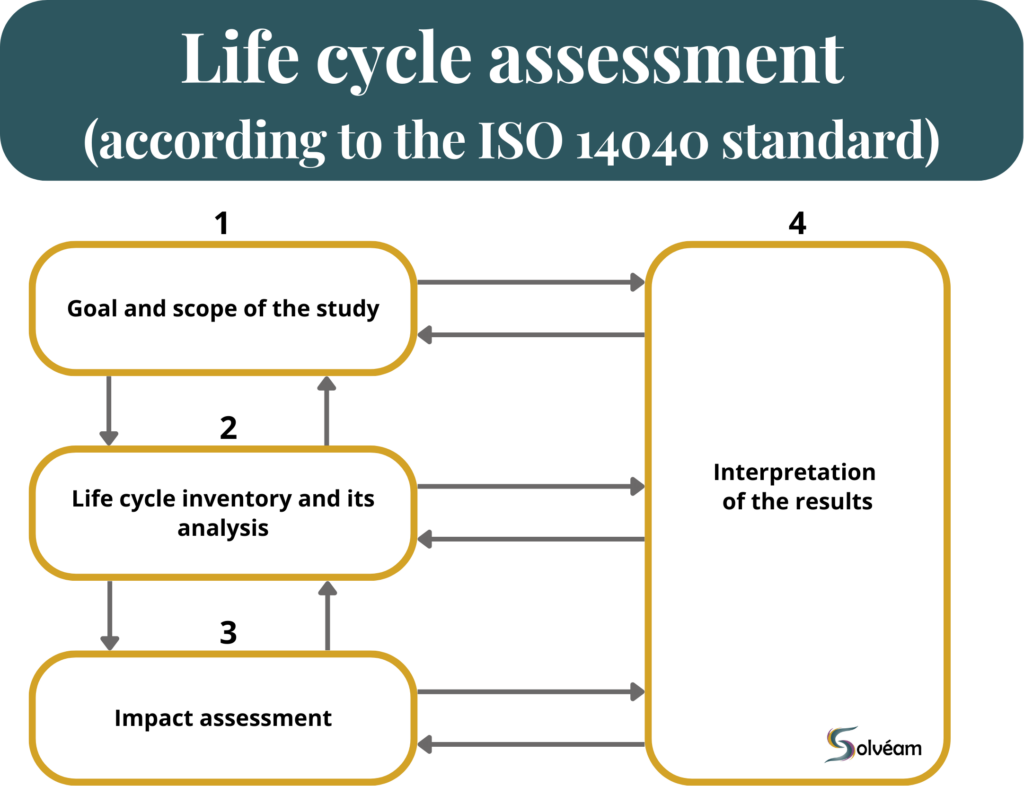What is a Life Cycle Assessment (LCA)?
Life Cycle Assessment (LCA) is an evaluation method that examines the environmental impact of a product or service, from the extraction of raw materials to its end of life. It is essential for identifying the most polluting phases, making more sustainable decisions within an eco-design approach, and promoting greater transparency. By using LCA, companies can enhance their environmental performance and meet the growing expectations of consumers and regulators regarding sustainability.
How does it work?
A Life Cycle Assessment (LCA) involves several key steps to evaluate the environmental impact of a product or service throughout its life cycle. The first step is defining the goals and scope, where the purpose of the LCA, the stakeholders involved, and the system boundaries to be analyzed are determined. The next phase is the Life Cycle Inventory (LCI), which involves collecting data on all inputs (resources) and outputs (waste, emissions) related to the product, from raw material extraction to its end of life. The third step is the impact assessment, where the environmental effects of the identified inputs and outputs are analyzed using indicators such as climate change, resource depletion, or toxicity. Finally, an interpretation of results is conducted to draw conclusions and formulate recommendations, helping to identify improvement areas and make informed decisions to reduce the product’s or service’s environmental impact.

There are several types of Life Cycle Assessments (LCA), each with specific objectives, scopes, and methodologies. The key is to always address the primary goal of the LCA while maintaining complete transparency and compliance with the ISO 14040 standard.
Why conduct an LCA?
LCAs can serve various purposes, such as:
- Eco-design: integrating sustainable principles from the design phase.
- Product comparison: evaluating the environmental impact of different options.
- Obtaining labels or certifications: meeting the requirements of certain environmental certifications.
- Compliance with standards and/or regulations: adhering to regulations that require the reporting of environmental impacts.
Formats and Publication Media
Some LCAs, such as FDES (Environmental and Health Declaration Sheets) or EPDs (Environmental Product Declarations), comply with specific regulations. These documents are verified by third-party organizations and are used in particular contexts, such as in the construction sector, for example.
Possible Study Scopes
LCAs can focus on different stages of a product’s life cycle:
- Cradle to Gate: analysis of environmental impacts from the extraction of raw materials to the product’s exit from the factory, before transportation and use by the consumer.
- Cradle to Grave: a comprehensive study covering all phases, from raw material extraction to the product’s end of life, including its use and disposal.
- Cradle to Cradle: a circular approach where materials are reused after the product’s end of life, aiming to minimize waste and maximize the reintroduction of resources into the production cycle.
Although it is recommended to calculate the impact across the entire life cycle, the scope of the study should be adapted to the goals of the LCA to ensure its relevance.

Different Types of LCAs
- Comparative LCA: used to compare several products or services.
- Specific LCA: focused on a specific and unique product or service.
- Multi-product/site LCA: used for a group of products or multiple production sites.
With new regulations, it is increasingly common to conduct specific LCAs for those intended to be published.
Calculation Methods and Software
There are several databases and software tools used for LCAs, often specific to different regions of the world. Since these tools can be costly, most experts specialize in a particular software and database.
Communication of results and greenwashing
When LCA results are intended for internal use and are not published, restrictions are generally more relaxed. However, as soon as an LCA is communicated or made public, strict rules apply. These rules aim to avoid any form of greenwashing and to guarantee total transparency.
This is why, in the context of a publication, the LCA study must be subject to a “critical review”. This is a verification of the calculations by an independent LCA expert, thus guaranteeing the accuracy and rigor of the results.
